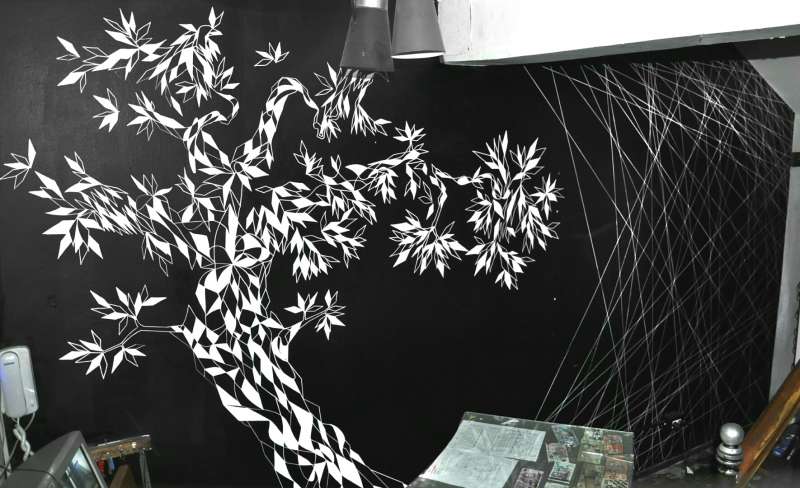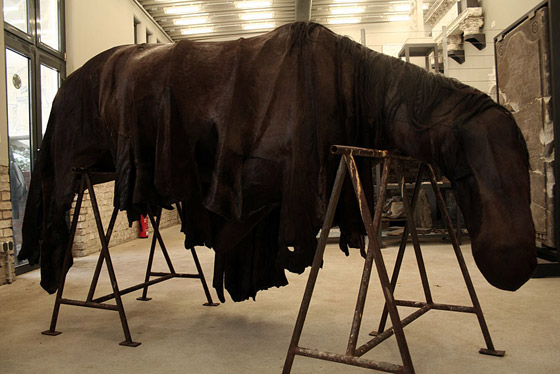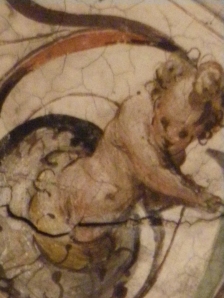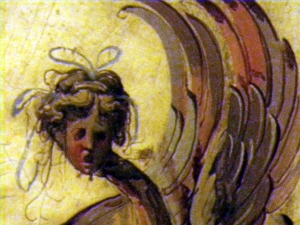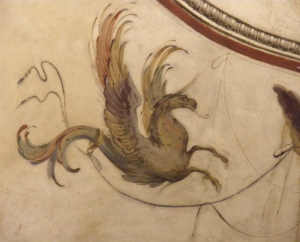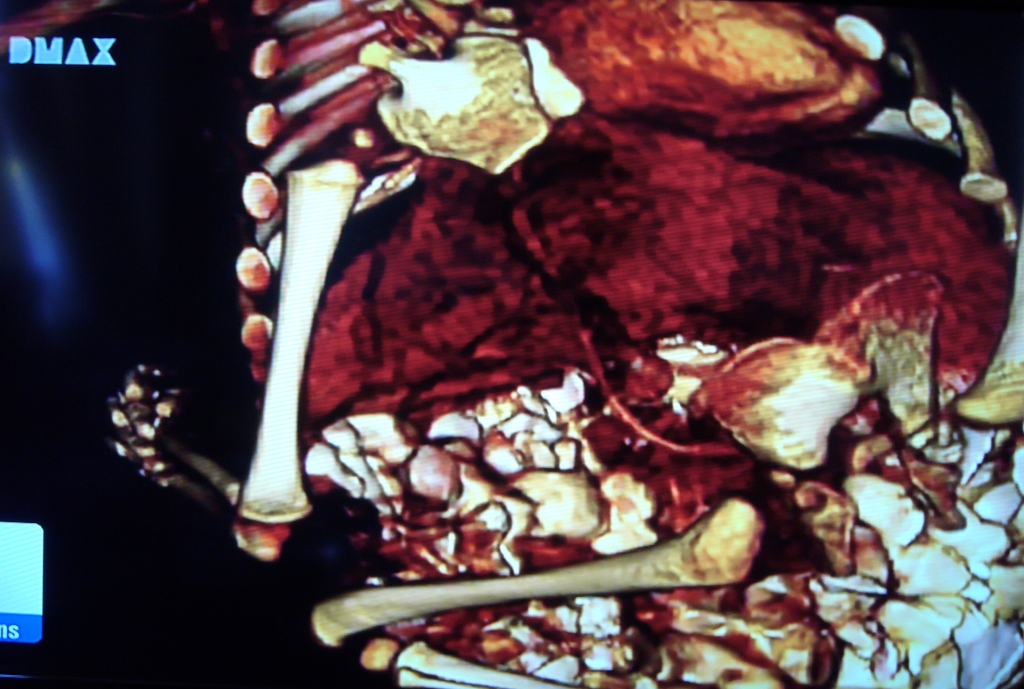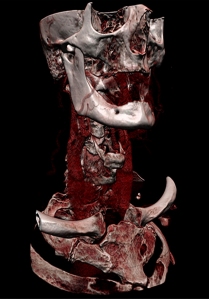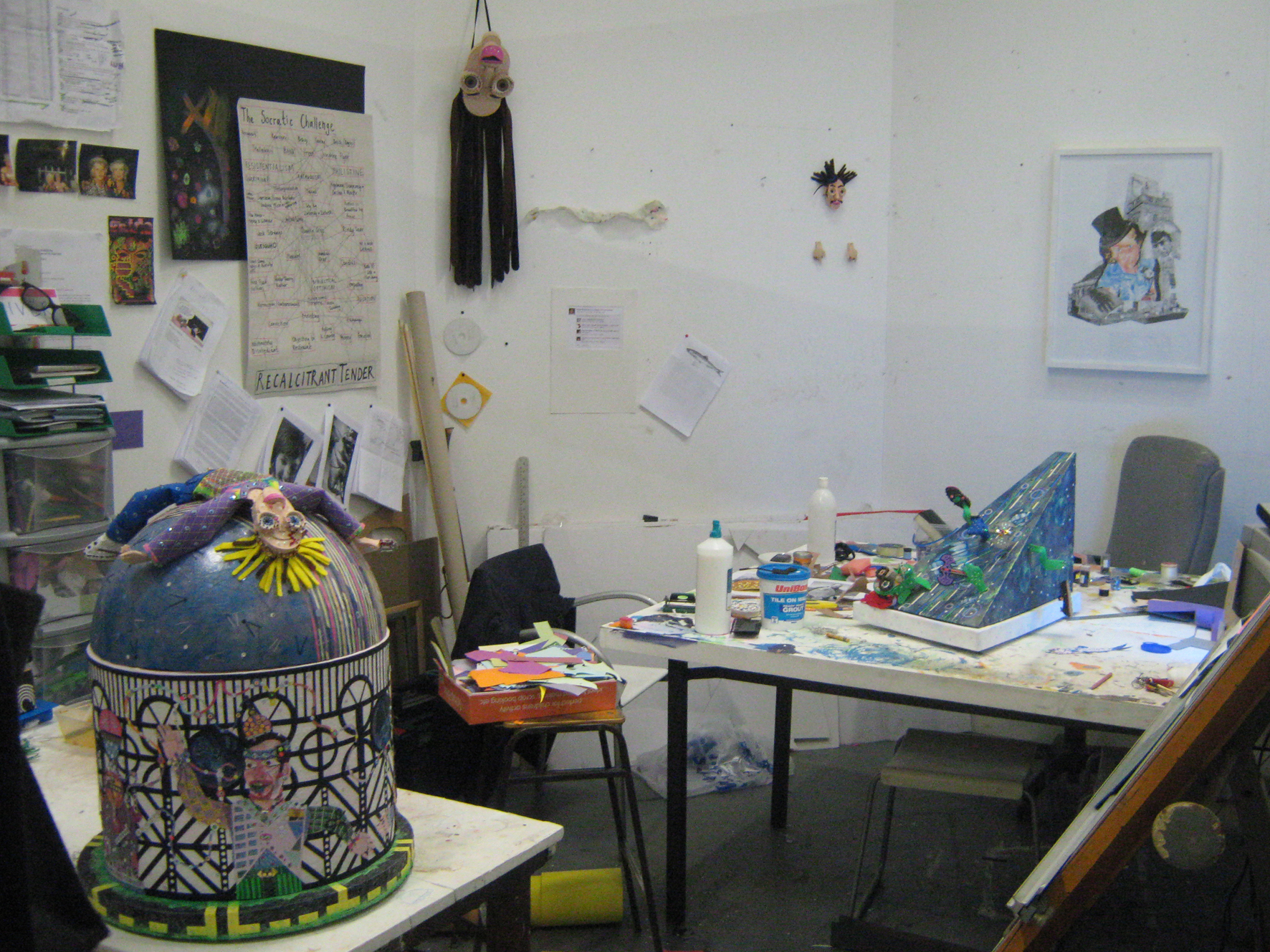Mural in Sucre, Bolivia: ‘El otro arbol de la vida’.
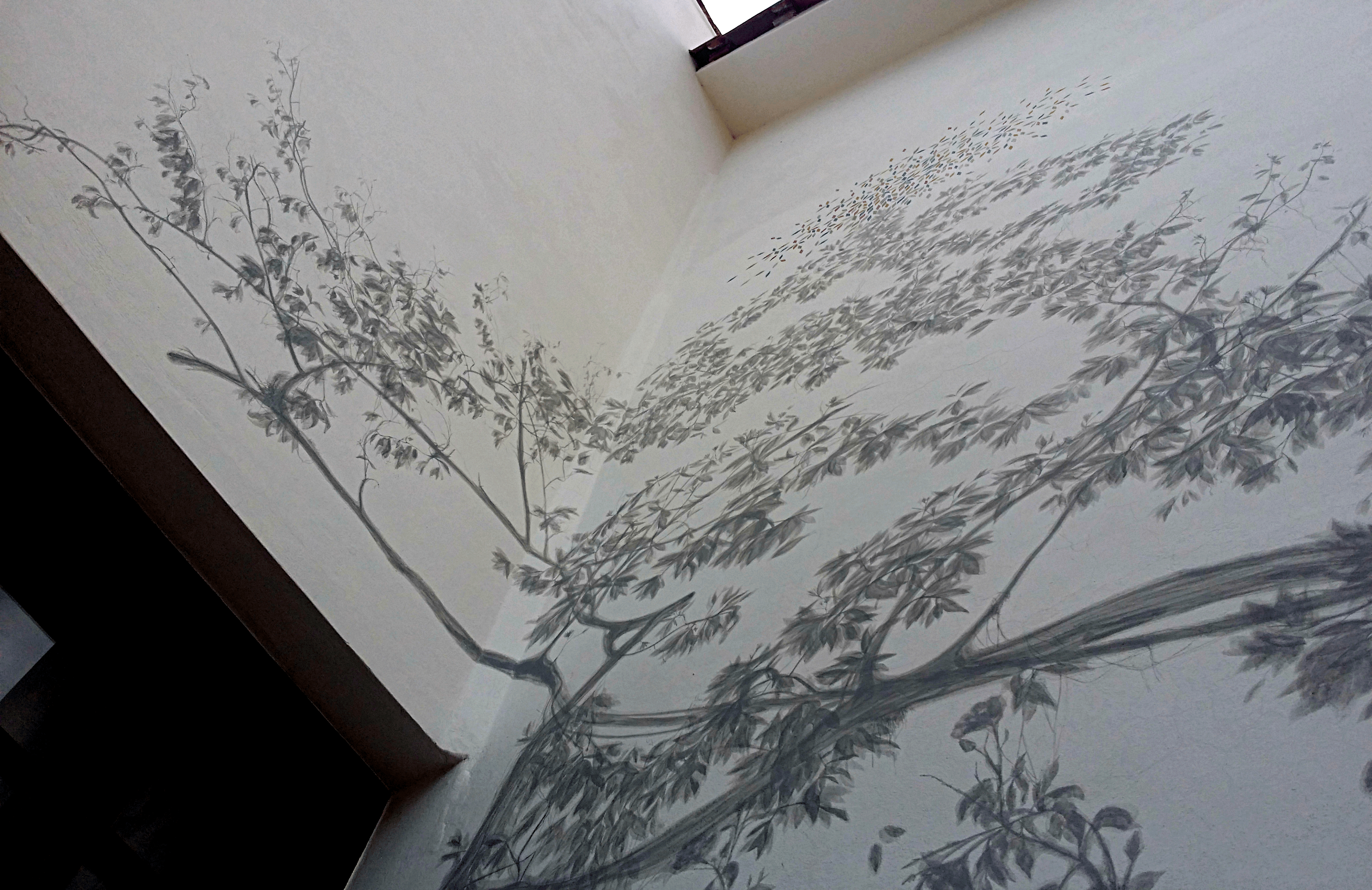
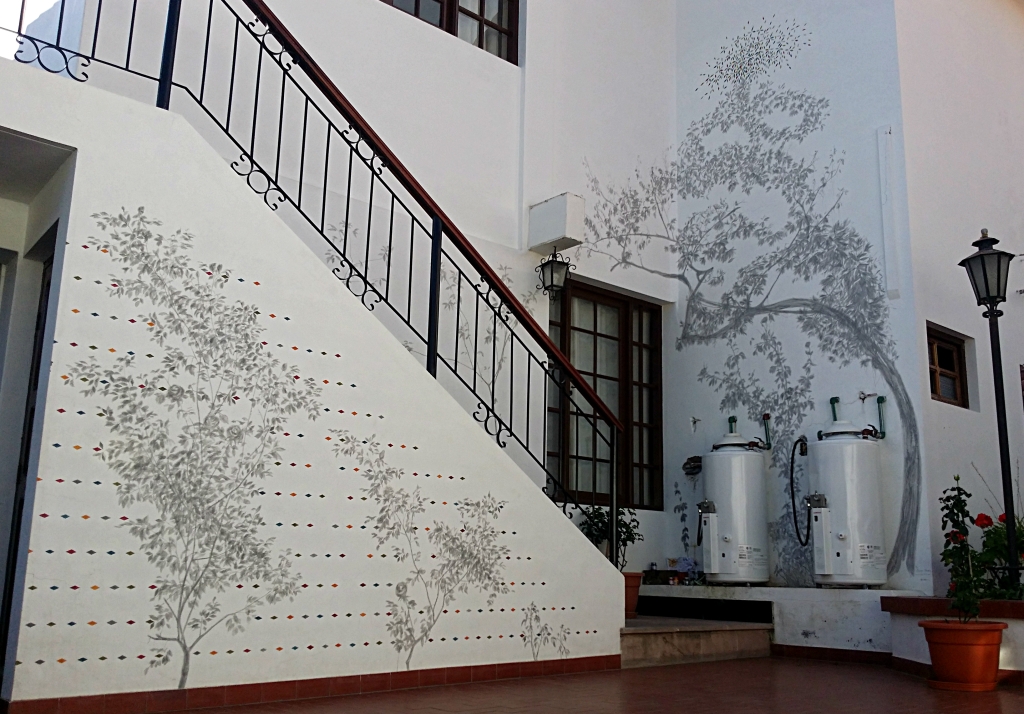
Inspiration for this mural came from the white walls of the city which cast beautiful shadows of the saplings and trees, especially at night near random sources of light. As the branches and leaves undulate with the sutle movements. At this time I felt I was starting to be reinvented (one of the many reasons we travel off-piste so to speak). I believe I fell in love, fell back in love with people and the enjoyment of being alone yet far from lonely.

My diary was dense during this time; the Bolivian out-of-this-world landscapes, a people and place enchanting and that I was getting to experience slowly, my personal daily determined learning of Spanish (not my forte but slowly have made a debatable fluency) as well as the odd useful word in Quecha, meeting travellers some of whom were in the midst of being hit with a jump in altitude, nights out with Bolivians and travellers equally with conversations that opened up, to befriending the friendly stray dogs – with my travel pack of dry dog food.
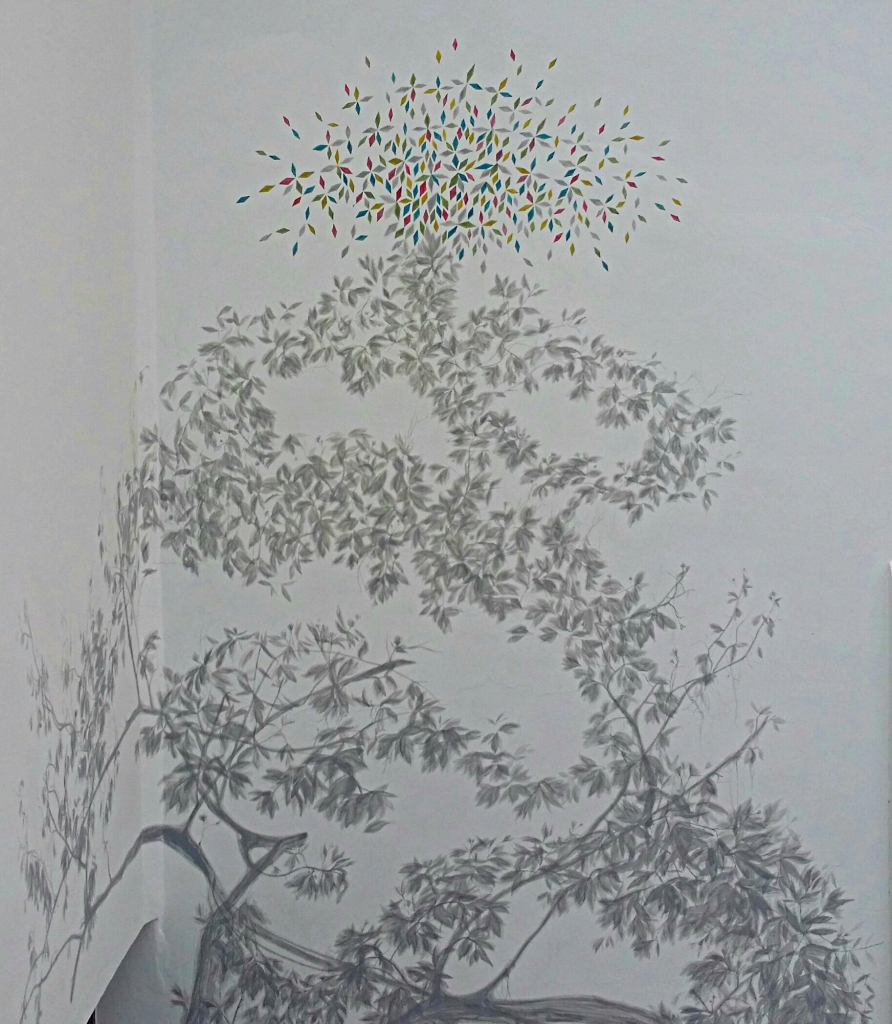
This mural was made two parts. Firstly my lifestyle in Sucre felt dramatic and alive. So who could blame me for wanting to return after taking to travelling further into Bolivia. When I asked if I could do another mural, my answer from the the owners of this amazing Colonial building said something along the lines of: Yes! Paint what you what where you want. Perfect answer. I was happy I returned to complete the part on the staircase.






A dedicated website for the rest of my murals can be found here. TheMuralofMurals.com
‘Sagittarius’ mural, Lima, Peru.

http://www.themuralofmurals.com
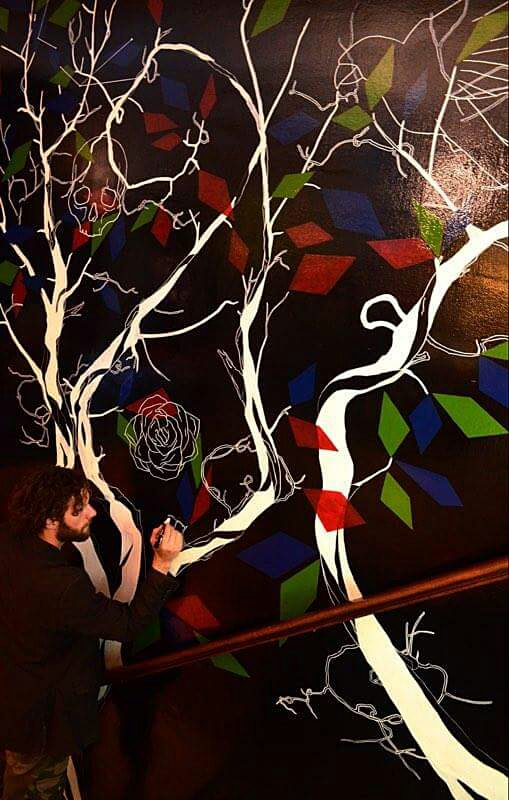

A nice find in the hectic city of Lima, while in the Dragonfly I merely mentioned I was going to make a mural in the countryside outside of the city -Yangas Valley. The conversation ended up in me taking on the largest wall they had. I reused the tactic of painting the whole wall in black oil paint- a complete transformation of the space from white to black gets a few reactions immediately. I’ve now done three large murals with pots of industrial oil paints- after the first one I vowed not to do one more like it. Like my Spanish, I am a slow learner yet.. deep waters run slow.
Mural in Buenos Aires
My travels started in Rio. ‘One travels to find ones self´’, many of us have a twist on that statement when we travel. For me I like to think I had a vague idea of what I wanted this to be all about when I started. In reality within little time, fantastic isolation, passing mountains, lakes, clouds, volcanos, salt flats, ruins and people -both beautiful and sometimes disturbing- I had lost myself. Again.
By chance my trip to Buenos Aires ended up making a mural in the Rock Hostel thanks to the So’s idea of finding a traveling artists to create while there. My mural making continued to Bolivia, Peru, Ecuador, Colombia, México.
Now on my slick mural website, to continue the contracts and conversations (en español también), making proposals to a wall near you. With a humble title: http://www.themuralofmurals.com


Myth of the scarecrow

The scarecrow has the ability to retain menace like an inanimate clown figure. It is impossible to avoid without great effort, images made by children or yourself will ultimately retain a psychological element of untrustworthy otherliness. A figure that just waits, in an aggressive stance, with our fear he may make a move in the night toward us at any time he wishes- or maybe a facial expression in our direction (doesn’t matter what expression).. but, the origin? The crow is such a clever bird, I have always found it hard to imagine they observe the scarecrow from a distance for hours and days without realising he is not alive. But then again, when we see humanoid figures such as mannequins, waxworks or film prosthetic characters deliver the same uncanny feeling (especially in the right light and setting).
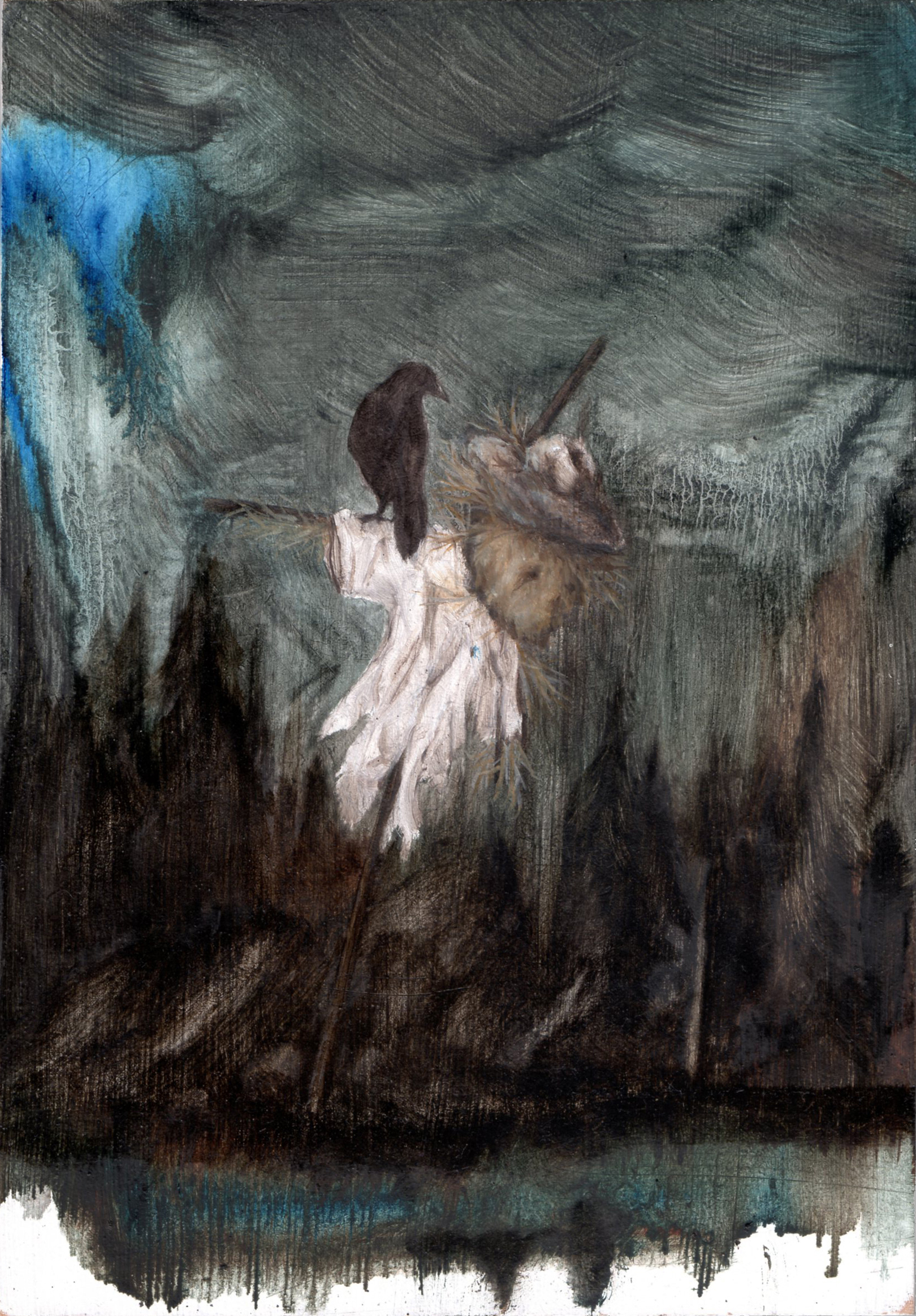
This was off the top of my head, I embarked to paint in all innocence, merely painting an interesting figure (something my ‘eye’ realsied I could could tackle and for some unrealised reason wanted to make). He stands strangely like a mannequin in a field wearing the farmers clothes.
But, here there is the mythology to follow what you have seen:
1. ‘Scarecrows link to the planting and protection of crops and the changing of the seasons. In agrarian societies, Spring was celebrated as a time of resurrection – of life reborn after the dark winter. Sacrifice is bound up in this cycle. Winter kills that which grows, and breeds, until it is reborn in Spring. And for many societies existed the idea that some deity or power needed a gift to ensure the prosperity of the new season. The Vanir were a group of Norse gods connected with fertility that were associated with ritual sacrifice. Effigies representing the gods were erected, and is possibly where scarecrows originated. Scarecrows also possess attributes that lend themselves to being scary. They look human but are expressionless.’ ~superwiki.
Tiepolo sketches
Giovanni Battista Tiepolo (1696–1770) was a master painter from the Venice region that produced these elaborate works that still seem to have the moments of the creative process still breathing within them. This is due to his style that he matured as a prolific draftsman and painter, a style that was more rapid and free that many of the painters of the time. The themes are recognised allegories that inspire the imagination of their grandeur. Tiepolo also worked in Germany and Spain and helped pave the way to the sketches of the masters being recognised as works of art independently.
 This two oil sketches were for the Palacio Real, Madrid c1762. The female figure of Spain with lions represents the province of Leon, the older woman represents a castle for Castile, with the traditional protector of Spain as Hercules, with the column for Gibraltar.
This two oil sketches were for the Palacio Real, Madrid c1762. The female figure of Spain with lions represents the province of Leon, the older woman represents a castle for Castile, with the traditional protector of Spain as Hercules, with the column for Gibraltar.
Perseus and Andromeda (1730)
Giovanni Battista Tiepolo, The Annunciation, c1735
Seated River God, Nymph with an Oar and Putto 1696 – 1770
Berlinde de Bruyckere
One of the strengths of these sculptures is there ability to make some quite bold statements around the areas of death, loneliness, cruelty or pain.. sometimes sensational statements, while at the same time showing their materials quite simply and how they seem to have been put together by the artist.
This sculpture when view in person shows the pieces of wax fused together in order to create this somewhat destitute life form- or destitute reminder. This sculpture reminds me of the Bernini’s sculpture of Apollo and Daphne, mythological tale of Daphne, whereby the plant life begins to hold of Daphne’s body, beginning at the fingers, hands, arms and works its way across the body in a sculptural snap-shot in a running motion. Although comparable, in contrast these wax limbs are heavy, frail and limp.
I see a beautiful kind of morbidity.
Death
Take a walk passed the skulls, the skeletons and the character of Death himself dancing on our backs, he is enticing us passed the diverse range of ways in which we can achieve the inevitable, and how we deal with it.. or is that not at the heart of the whole exhibition?

This is the kind of exhibition that you may find yourself thinking thoughts like: Everyone on the planet at present -not that long after I am dead in the grand scheme of things- will all have passed away, will all be gone. To myself, it often feels the idea of being truly dead (as a door nail), usually feels like a stretch of the imagination. Yet, I at times I feel I have rare momentary glimpses into this (often difficult to except) reality.
Sobering, thoughtful, funny, engrossing, therapeutic.
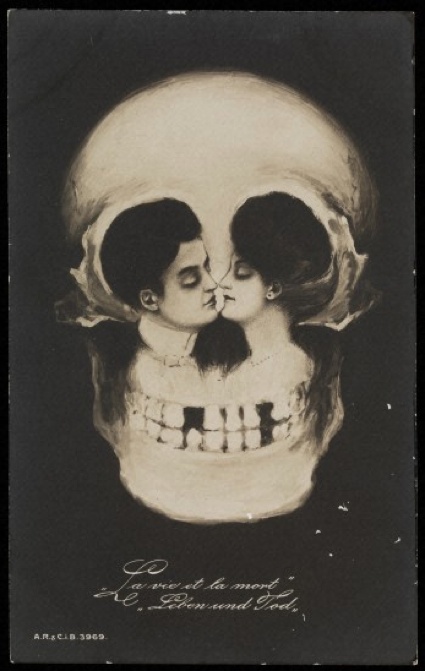
Death: A Self-portrait exhibition at the Wellcome Collection London. Donated by Richard Harris.
Anatomical research variation
Not in chronological order, but this is how I came to know the body, in its parts.
1. television (screen shots):
2. digital mri imaging
This drawing in particular (whom had a few years in my studio) creates a
strange feeling it is alright to die physically, if beauty like this can be revealed.
The beautiful and seemingly ambiguous image for: Method and Meditation by Rene Descartes (from the Wellcome Collection, London).
4. Photography
Art Studio’s
This post is briefly looking at the interior of some artist studios miscellaneously collected. Avoiding famous artist studio for now (mine is in there too). After a quick look at these photographs it becomes more obvious how the studio can affect the way the work looks or turns out. Here is the home studio, bedroom studio, garage studio, art school studio, established artist studio and emerging artist studio.
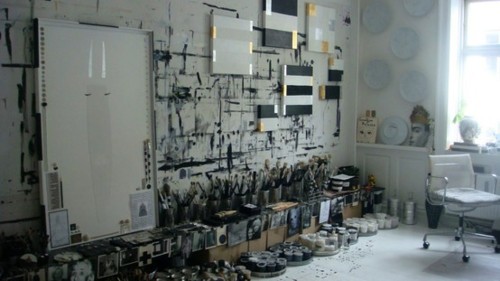
Before taking a photo of your studio, please don’t go and have a good spring clean up. These are the work spaces that interested parties might be looking carefully at, not only to see the imagined ‘lifestyle’ of the artist, but to see into their tricks of the trade, and possible secrets of alchemy. Maybe to jump a few hurdles which took the artist’s themselves years to discover! Such as the use of plates, plastic cups and tin cans to mix paint on, wax pencils, rags, types of paint and brushes used.. or seeing walls covered in a collection of their own work to gauge new work against, or a plethora of image source materials collected for direct use or inspiration, versus the stark clean studio and surfaces you could eat off of.
While looking for these studio images, seems the best images are of those which show a few personal working methods and set-ups. The secrets or surprises are the practices we want to know.


